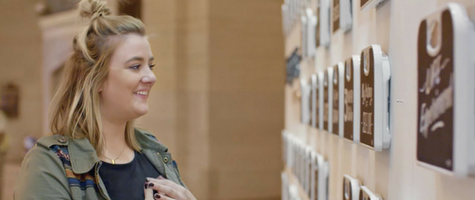Experiential Marketing 101 – What Every Marketer Needs to Know

Experiential marketing is trending right now and there’s good reason: it’s a great way to emotionally connect with consumers in a time where attention is becoming an increasingly scarce commodity. But what is experiential marketing? Why should you have an experiential marketing strategy? That’s what we are exploring today, the first in a two-part series on the topic.
What is Experiential Marketing?
Experiential marketing, sometimes referred to as “engagement marketing” is an immersive strategy that engages the audience in a hands-on, physical experience. You might think of it as the epitome of “audience participation.” Some people also consider it the more strategic, well-intentioned, sophisticated cousin of “publicity stunt.”
According to CMO.com there are nine different categories of experiential marketing:
Promotional: traditional event marketing
Tactical: a tool created to engage a customer as a stand-alone tactic
Sponsorship activation: sponsorship activation of property, venue, celebrity, or other
Co-promotion: experience among partners who are connected by association in some way
Proprietary stand alone: an experience on its own not as part of a greater whole
Vendor: an experience that is encompassed within a larger experience that is not about the brand
Cross channel: proprietary experience as part of an integrated campaign
Proprietary one of a kind: experience created as never been done before
Proprietary foundational: an experience that is part of a platform that lives on for longer than its promotional timeframe
Why Experiential Marketing?
Experiential marketing is a strategy that can really set apart a brand from its competition by creating emotional connections between a brand and a consumer that foster loyalty and heighten the overall customer experience. If you are a company that has allocate budget to advertising, you can utilize experiential marketing, whether it is a B2B company creating an experience at a conference or a B2C company doing it in Times Square. Experiencing a brand in a tangible, offline setting can build rapport between a consumer and a brand in a very memorable way.
There’s research to back up these assertions. According to the Experiential Marketing Content Benchmarking Report, 72% percent of consumers say they positively view brands that provide great experiences.
And according to research conducted by Google, Ogilvy, and McKinsey, brand experience is the most powerful form of word-of-mouth driving activity for 50 to 80 percent in any given product category. And consumers are more influenced by word-of-mouth when making purchasing decisions than they are by print media, television, movies, and brand websites.
Experiential marketing can be used to create long-lasting bonds between consumers and brands. If your company has not tried it yet, this may be the time to consider the possibilities.

